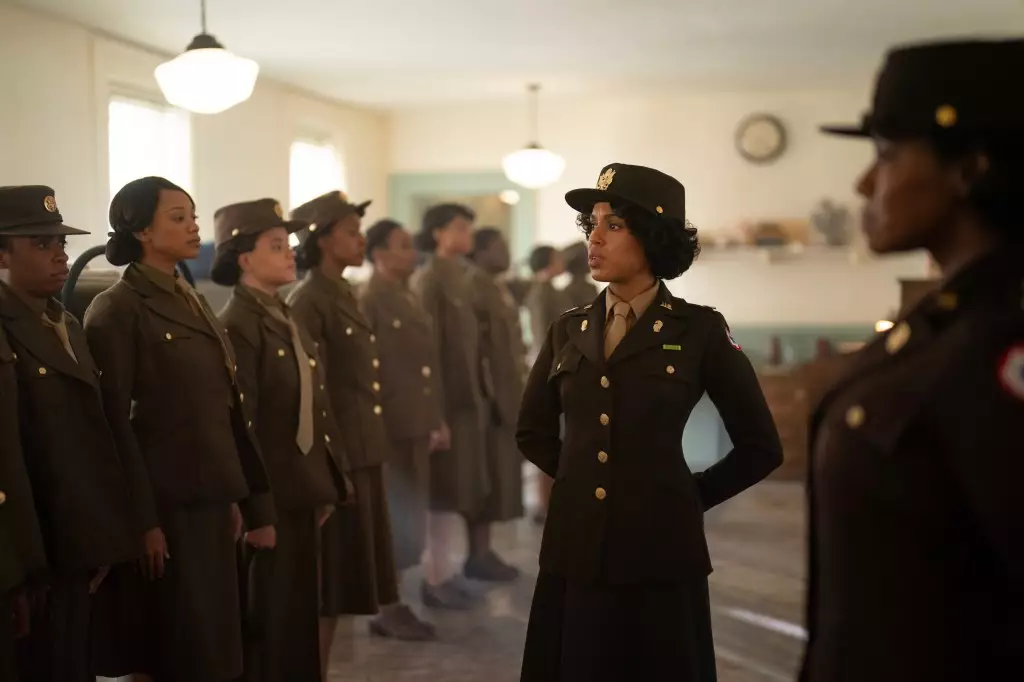The rich tapestry of World War II is often recounted through the lens of valor and sacrifice, yet there remain countless stories hidden in the shadows, waiting for their rightful place in history. Tyler Perry’s latest cinematic endeavor, *The Six Triple Eight*, serves as a revelatory tribute to one such incredible chapter: the contributions of the Women’s Army Corps Unit of Color. This film vividly illuminates the resilience and determination of over 855 women of color, primarily Black women, who faced immense hurdles—racism, sexism, and harsh conditions—as they undertook a transformative mission during a pivotal moment in history.
The narrative of the 6888th Central Postal Directory Battalion remains largely overlooked, despite the unit’s critical role in maintaining communication between soldiers and their families. The wartime landscape of 1945 was devoid of modern conveniences like smartphones or email; the only shared lifeline was through letters. Perry’s storytelling thus pivots around the powerful mantra of Major Charity Adams, played by Kerry Washington: “No Mail, No Morale.” This one-liner encapsulates their undertaking perfectly—without a stable channel of communication, soldiers faced the harrowing possibility of being disconnected from their loved ones.
Perry’s approach to storytelling unfolds from multiple perspectives, capturing the trials and triumphs of individual members of the battalion. By elevating personal narratives, the film connects audiences to the larger mission, allowing viewers to relate viscerally to these historical figures. One poignant subplot follows Lena Denniecott King, a character who embodies the despair of war through her own anxieties and uncertainties about her partner’s fate. This personal connection to the narrative adds depth to the overarching themes of bravery and sacrifice, solidifying the emotional impact of the film.
In many traditionally heroic narratives, characters who embody courage often face external enemies, yet *The Six Triple Eight* diverges by illustrating the internal and systemic challenges these women faced. Rife with institutional racism and sexism, the battalion stood not only against enemy forces abroad but also against the pervasive prejudice within their own ranks. The portrayal of General Halt, a character steeped in condescension toward the women in his command, drives home the film’s commentary on the intersectionality of race and gender during wartime.
Through Perry’s lens, the historical significance of these women’s contributions extends beyond their immediate military service. Their tenacity and ability to thrive in such oppressive environments highlight the latent potential of women in the armed forces, an aspect of history that continues to resonate in discussions on diversity and inclusion today. The film’s timely release serves as both a reminder of past injustices and a call for recognition and respect for women in military service.
Visual and Aesthetic Mastery
Much has been said about the storytelling in *The Six Triple Eight*, but it would be remiss not to spotlight its cinematic artisanry. The film captures the essence of the 1940s through meticulous attention to detail in costume and production design, enabling audiences to be transported back in time. Karyn Wagner’s costumes and Sharon Busse’s production design beautifully complement Perry’s vision, bringing authenticity to scenes depicting life during the war and the daunting journey across the Atlantic.
Moreover, the poignant musical backdrop crafted by Aaron Zigman and a stirring anthem by Diane Warren, performed by H.E.R., further enhance the emotional resonance of the film. The score serves as an aural embodiment of the narrative’s struggle and triumph, ushering viewers through the highs and lows of the characters’ journeys.
*The Six Triple Eight* stands as a crucial contribution to the ongoing conversation about representation and recognition within war narratives. Tyler Perry has skillfully breathed life into a story that deserves to be celebrated, paralleling other groundbreaking films like *Hidden Figures*. As audiences prepare for this film’s release on Netflix, we are reminded of the power of storytelling to unearth hidden histories and to honor those brave souls who served against formidable odds.
The film not only celebrates the extraordinary endurance of the 6888th but also serves as a profound reflection on the sacrifices and contributions of women, especially women of color, in history. This holiday release is not simply a cinematic event; it is a reminder of the legacy of service, resilience, and bravery, making it a resonant beacon for future generations to explore their own roles in crafting history. The stories may have been estranged from mainstream narratives, but through Perry’s enlightening portrayal, they will not be forgotten.


Leave a Reply